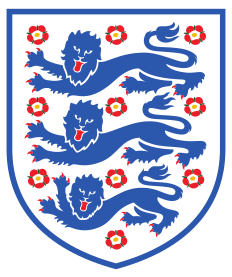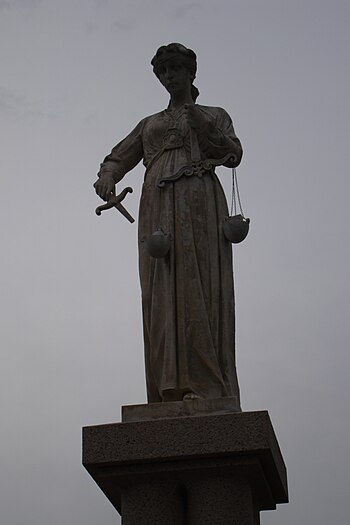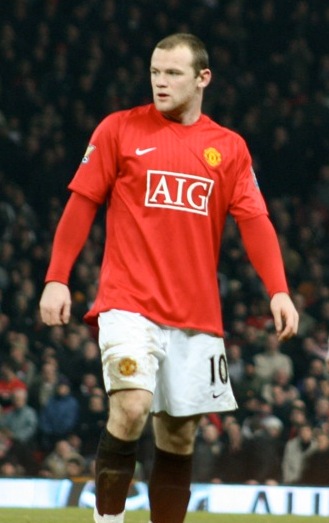 |
| The Old Shrivenham Road Terrace |
My first experience of watching Swindon Town was in the old Shrivenham Road terracing at the County Ground and one of the first matches I attended was the 5 - 0 drubbing of
Fulham FC in the FA Cup third round replay on Tuesday 11th January 1977. This Fulham side boasted amongst its regular starting line-up the likes of Bobby Moore,
Rodney Marsh and George Best, but Swindon Town drew 3 - 3 at Craven Cottage the previous Saturday to bring the team from the then Second Division (today's Championship) to a cold, crisp night of football in Wiltshire. Swindon Town were playing in the league below them (Division Three or today's League 1) and, despite the Robins' performance at Craven Cottage, the trio of world stars that the West London club had in their first team were expected to lead them to an easy victory over the club from the Moonraker's county.
 |
| The Old Shrivenham Road Terrace and the Town End as a Terrace |
Despite the silky skills of the World Cup winning England captain and the world class abilities of Best and Marsh, Fulham suffered a thumping 5 - 0 defeat leaving the majority of the 23,883 crowd with a big smile on their faces as they filed out of the ground at full time. I was stood in the Shrivenham Road terrace in line with the 18 yard box at the Town End. I was eleven years old, but had the stature of someone half my age, so, for most of the game, I saw only what was in front of me on the pitch or the backs of people stood in front of me - when the play went towards the Stratton Bank, I had no chance of seeing any of the action!
 |
| David Fairclough - aka "Super Sub" |
Three seasons later, I still hadn't grown much (my brothers all inherited the "tall" genes), but I'd graduated to the Town End. The experience of the "Home" terrace was that I learned a lot of rude songs, found that on cold days, like penguins, we could all huddle together for warmth and that "bundling" down the terrace when the team scored, or the game was boring, created the waves seen on the Kop and other large terraces at other football grounds, but on a rather smaller scale. Often, people would be treated by the St. John Ambulance volunteers for injuries sustained during such activities, but these were seen as an occupational hazard for the average terrace-dwelling football fan. The crowd would swell or diminish depending on who the opponents were, but, after a thrilling 1 - 1 draw at Highbury when Billy Tucker equalised after coming on as a "Super Sub" a la David Fairclough (ask your Dad/Grandad), Swindon Town hosted Arsenal FC of the 1st Division (today's Premier League) in the replay of the League Cup Quarter Final on Tuesday 11th December 1979.
 |
| STFC v Arsenal 1979 |
A crowd of 21,795 packed into the County Ground and there was hardly room to breathe in the Town End. For someone of diminutive stature, the only chance to see any of the match was to climb up the back and hang in the rafters like a monkey - for those of you that were there, I was the annoying person with the horn that presaged the vuvuzela. The Arsenal team boasted more stars than the Fulham side of 1977 with the likes of David O'Leary, Frank Stapleton, Liam Brady, Graham Rix, John Hollins, Alan Sunderland, Brian Talbot, Willie Young and the mighty Pat Jennings in goal. The score was 3 - 3 at full time and Andy Rowland scored the winner in the second half of extra time to secure another famous victory at the County Ground.
 |
| The Stratton Bank Terrace - as was |
The point of the reminiscences above is to illustrate that the terrace experience, standing to watch your football team, is not always the best way to get your money's worth from the ninety minutes of activity on the pitch. If you are of a certain height, elderly or infirm, then standing to watch a game of football has its limitations, especially on the terraces of old which are still prevalent in the lower divisions of the Football League. The view for these customers/fans would be obstructed and crucial elements of the match would be missed due, for example, to the Neanderthal in front getting in the way. These terraces have their dangers as well with turned ankles being the least of someone's worries if they tumble to the ground whilst being pushed from behind by the "bundle" as described earlier; once one of these waves started down the terrace, the only thing to stop it was the crush barriers in front, which was painful if you were stood in front of the barrier as the wave of humanity crashed into you from behind.
 |
| Caged Like Animals |
The tragedy at Hillsborough on Saturday 15th April 1989, where 96 Liverpool football fans died as a result of a crush at the Leppings Lane end of the ground brought a renewed focus onto the archaic stadia up and down the country and especially the terracing that was standard at the time for all football clubs. The final version of The Taylor Report was published in January 1990. It was the result of the inquiry into the events on that day and it recommended that all major football grounds (Premier League and Championship) be all seater. This led to the
Football Spectators Act 1989 in which the Thatcher Regime tried unsuccessfully to force football clubs to introduce membership cards for their fans; you must remember, this was in the days when football fans were looked upon as scum rather than the clubs'customer base. One of the factors that exacerbated the Hillsborough disaster was the fencing that all clubs had around their grounds to segregate rival fans and to prevent them from invading the pitch. Clearly, something had to change within the football community if further disasters were to be averted.

For me, the introduction of all seater stadia was a move in the right direction. Comparing even the County Ground of today to that of the 1980's, it is evident that the match day experience is no longer one of enduring the armpit sweat of your neighbour whilst trying to keep your footing as the crowd surges threatened to topple you forwards. You can drink a hot beverage and not fear that someone's elbow is going to knock the cup from your grasp, spilling its scalding contents all over your person. From the County Ground, we can look enviously down the road at the Madjeski Stadium, home of Reading FC, and see what a modern stadium can bring to the community of a footballing town. The stadia that have been born out of the Taylor Report show how good things can be once a club's football supporters are looked upon as customers rather than scum to be tolerated.

However, inherent in the legislation and the provision of seating is that all spectators must, within reason, remain seated for the duration of the game - allowance is made for goals scored, etc. The football club's team of stewards and the police are charged with enforcing this aspect of the law and it can easily be carried out if an individual continually flouts the rules by standing at a game. The problem arises when the whole crowd within a stand at a stadium remain on their feet throughout the match. How does a small team of stewards and police enforce the "no standing" rule when thousands of fans are flouting the law at the same time? Generally, a common sense approach is taken and throughout the country, fans are permitted to stand in a seated area providing there is no crowd disturbance. For the most part, the fans in the Town End remain standing throughout a match and there appears to be no friction between them and the stewards or police. Although some of the fans are standing, because those in front are doing so, thus obstructing the ones behind view, clearly there is a desire amongst some fans to have a standing area somewhere in their stadium.
 |
| The Yellow Wall |
 |
| Liverpool's Kop |
So-called "Safe Standing" areas have been incorporated into the designs of new stadia throughout Europe, but especially those in Germany. The Westfalenstadion (or Signal Iduna Park) is the home of Borussia Dortmund. The south grandstand has a capacity of 25,000 for standing spectators. Commonly known as "The Yellow Wall", when full, it is reminiscent of the various Kops throughout the old British football grounds when, especially in the 1970's, they used to be a sea of scarves and banners. The atmosphere that standing fans create behind the goal is greater than that of seated fans and is one aspect of the match day experience that has diminished since the advent of all seater stadia - one reason that some fans feel compelled to stand throughout a game. Another reason is that some people feel that they have to rail against authority and stand only because they are not allowed to. Others are probably too young to remember the decrepit, old stadia of yesteryear and have never had the experience of standing on an old windswept terrace.
 |
| An Old Style Terrace |
Whatever their reason for wanting to do so, there is a groundswell of support for reintroducing standing areas into domestic football grounds. However, if this is to be done, then the old style terracing is obviously somewhere not to be revisited. Modern "Safe Standing" design incorporates seats that can be safely folded away, allowing fans to stand behind a sturdy barrier with a barrier at their back.
The old time "bundles" are a thing of the past, as the crushes down the terrace can no longer occur.
However, more customers can be accommodated in this sort of stand than one that is all seated and the seats can be used as and when required. These "Safe Standing" areas seem like a good compromise for those wanting to stand at a football match and those concerned with safety. I for one would probably not use one, those "tall" genes never did kick in, but I would rather my kin who wanted to stand did so in a safe area rather than the terracing I endured in my formative years.















































